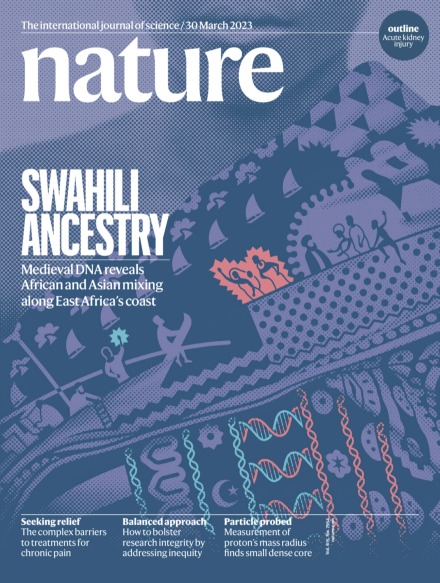Volume 615 Issue 7954, 30 March 2023
This Week
-
Editorial
-
-
Research Highlights
News in Focus
-
News
-
Features
Books & Arts
-
Book Review
Opinion
-
Comment
Work
-
Feature
-
Where I Work
Research
-
News & Views
-
Articles

